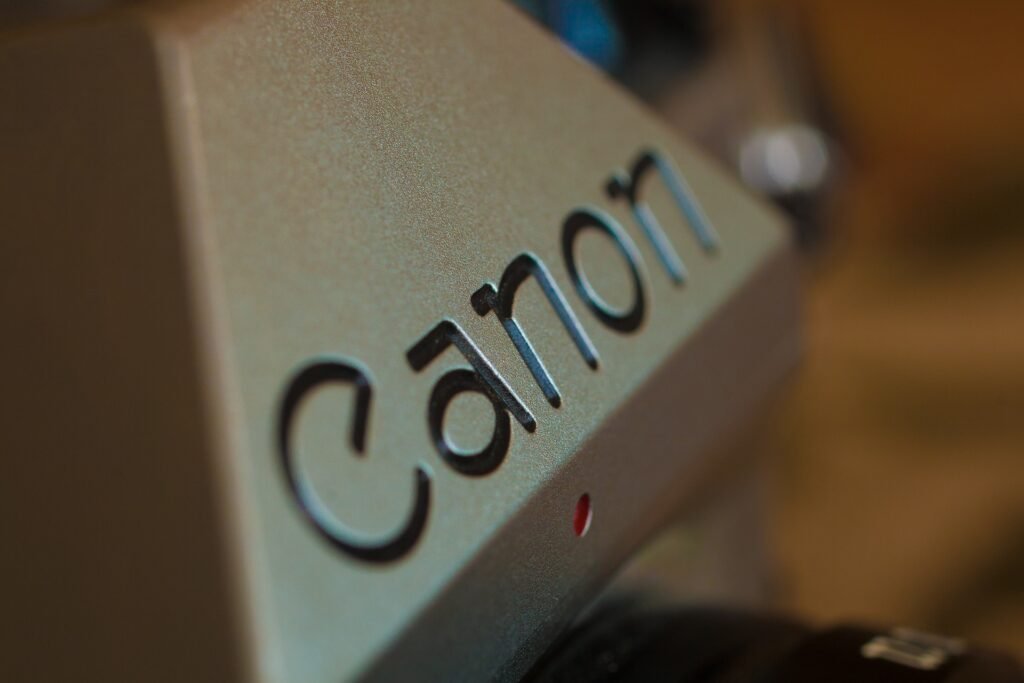Physical Address
304 North Cardinal St.
Dorchester Center, MA 02124
Physical Address
304 North Cardinal St.
Dorchester Center, MA 02124
The Canon AE-1, released in 1976, remains one of the most iconic 35mm film cameras in photography. Known for its simplicity, durability, and mass appeal, it became the go-to camera for both hobbyists and professionals throughout the late 20th century. Fast forward to 2024, and many photographers are re-discovering the charm of film. But how does the Canon AE-1 hold up in the digital age? Let’s break down the pros and cons.

In an era dominated by digital photography, using a Canon AE-1 offers a hands-on, tactile experience that many photographers appreciate. Loading film, manually adjusting the aperture and shutter speed, and waiting for your film to develop gives a sense of anticipation and connection to the craft. This analog workflow can reignite creativity and offers something digital just can’t replicate.
The Canon AE-1 is a beautifully designed camera, boasting a solid, all-metal body that feels substantial in hand. While newer cameras tend to lean on lightweight, plastic materials, the AE-1’s build inspires confidence and durability. This camera was built to last, and many vintage AE-1 models are still in excellent condition nearly 50 years later.
Though it’s a manual camera, the Canon AE-1 comes with shutter-priority auto-exposure (Tv mode), which was revolutionary at the time. This feature allows the camera to automatically set the aperture while you choose the shutter speed—perfect for those getting into film photography in 2024 who may be intimidated by fully manual controls.
Compared to other vintage film cameras like the Nikon F3 or Leica M6, the Canon AE-1 is still relatively affordable. While prices have increased due to the resurgence in film photography, you can often find a well-maintained AE-1 at a fraction of the cost of other classics, making it a good starting point for newcomers to analog.
The Canon AE-1 uses the Canon FD lens mount, and while Canon FD lenses are no longer produced, they are still widely available on the secondhand market. FD lenses are also quite affordable compared to modern glass, and they produce stunning image quality, adding a unique vintage character to your photos.
One of the major downsides of the Canon AE-1 is its reliance on batteries. Unlike fully mechanical cameras, which can operate without power, the AE-1 requires a 4LR44 (6V) battery to function. While these batteries are still available, the camera is essentially a paperweight without them, which might be a concern if you’re in remote areas or don’t have easy access to replacements.
With a top shutter speed of 1/1000th of a second, the Canon AE-1 falls short of some modern cameras. If you’re used to fast-action photography, or shooting in very bright conditions with high-speed film, this limitation can be frustrating. By comparison, many digital and higher-end analog cameras offer shutter speeds up to 1/4000th of a second or faster.
The Canon AE-1’s shutter and mirror slap are quite noisy compared to more modern or even other vintage film cameras. If you’re into street or documentary photography where discretion is key, this camera may not be ideal. Additionally, the mirror slap can cause a bit of vibration, though this is a minor issue for most shooters.
The Canon AE-1 reads the film speed via the ISO dial, but lacks manual override features common in modern cameras. While this is typical of cameras from the 1970s, it can be limiting for those who want to push or pull film—though you can still manually adjust exposure compensation.
Many Canon AE-1 models have been in use for decades, so it’s crucial to be aware that some components may be nearing the end of their lifespan. Issues like light leaks, sticky shutters, or faulty light meters are common problems in older cameras, and repair costs can sometimes outweigh the value of the camera itself.
While it’s clear that the Canon AE-1 is no longer at the cutting edge of camera technology, its staying power is a testament to its robust design and ease of use. In 2024, it’s cherished by film enthusiasts for its simplicity, aesthetic, and the rewarding process it offers. For those looking to slow down, be intentional with their photography, and embrace the unpredictable nature of film, the Canon AE-1 is still an excellent choice.
However, it’s important to keep in mind that film photography requires a different mindset. In 2024, the cost of film and developing has increased, and the learning curve can be steep for those who grew up with digital cameras or smartphones. Additionally, if you’re used to the immediate feedback and editing capabilities of digital, working with the AE-1 might feel limiting at first.
The Canon AE-1 still holds its own as a reliable and fun entry into film photography in 2024. Its iconic design, ease of use, and affordability make it appealing to beginners and nostalgic photographers alike. While it has its flaws—most notably its aging components and limited features—the AE-1 continues to capture hearts in a world dominated by digital.